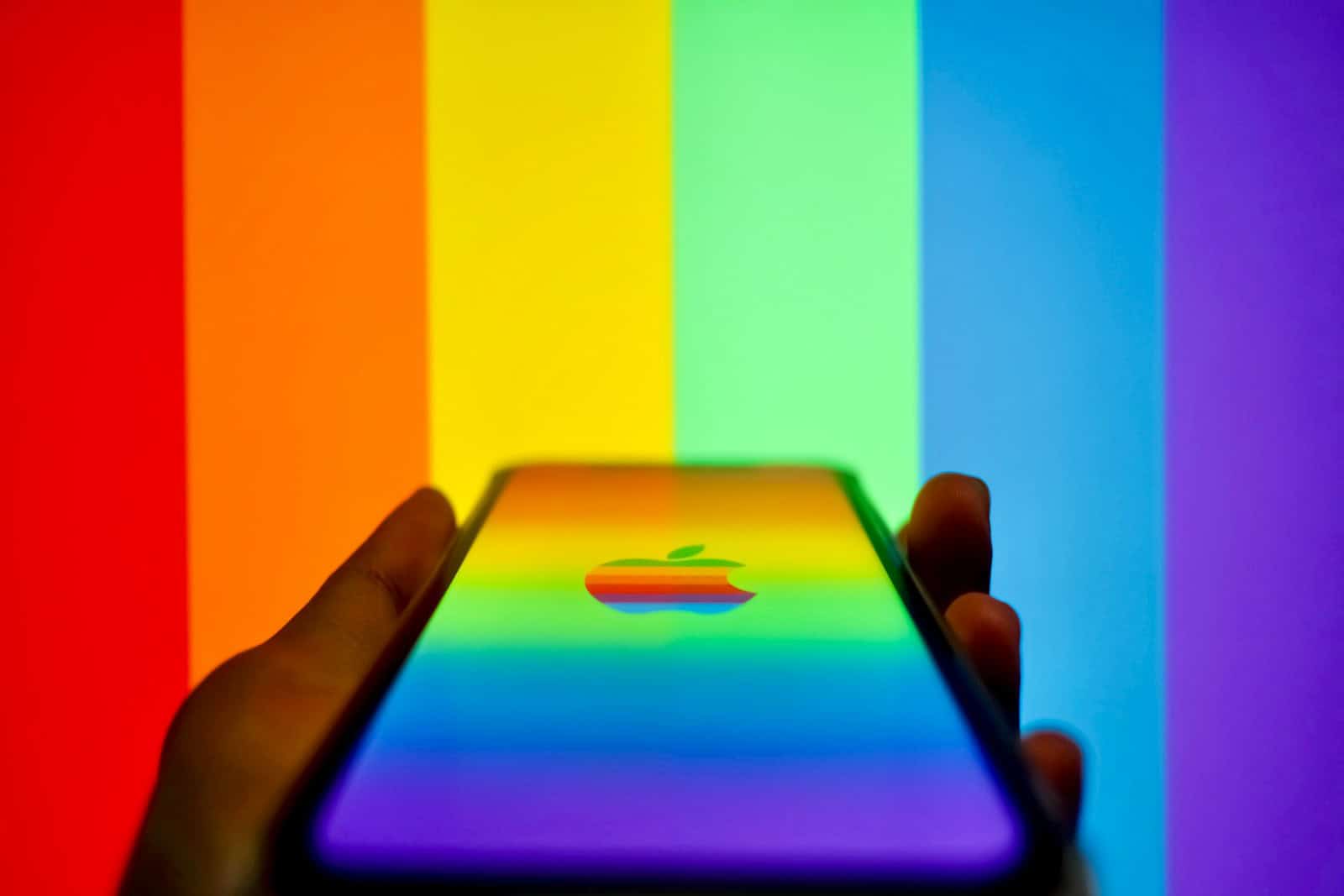Investing in Apple Inc. has consistently proven to be a highly profitable decision for stakeholders over the years. What was the offering price at Apple’s initial public offering (IPO)? Apple went public on December 12, 1980 at $22.00 per share. The stock has split five times since the IPO, so on a split-adjusted basis the IPO share price was $0.10. That’s a remarkable return for a company that has been in the tech space for long. And people who have held on since day 1 have been handsomely rewarded.
For example, a hypothetical investment of $10,000 made 44 years ago would have grown to an astounding $25.2+ million (not even counting dividends), illustrating Apple’s strong position as a leader in both innovation and market valuation.
Apple’s remarkable performance over the decades serves as an excellent case study in growth investing. The upcoming release of new products and ongoing innovations are crucial factors to monitor as Apple works to maintain its leadership in the tech industry.
Here’s a look at the company’s stock journey from the IPO to today:
Apple’s Stock Market Journey: From IPO to Today
The 1980 IPO: A Starting Point
Apple Computer, Inc. (now Apple Inc.) launched its initial public offering (IPO) on December 12, 1980. The stock was priced at $22 per share. This event marked a crucial point in the company’s history, opening it to public investment. Many people saw the potential in the young company, founded by Steve Jobs and Steve Wozniak. The IPO instantly made several early investors millionaires.
Stock Splits: Multiplying Your Shares
Over the past 44 years, Apple’s stock has undergone several splits. Stock splits increase the number of shares you own but decrease the price per share proportionally. This makes the stock more accessible to smaller investors. Apple’s stock splits are:
- June 16, 1987: 2-for-1
- June 21, 2000: 2-for-1
- February 28, 2005: 2-for-1
- June 9, 2014: 7-for-1
- August 31, 2020: 4-for-1
If you held shares from the IPO, these splits significantly increased your holdings.
Calculating the Growth of a $10,000 Investment
Let’s imagine you invested $10,000 in Apple’s IPO at $22 per share. This would have bought you approximately 454.55 shares (10,000 / 22). Since you can’t buy fractions of shares, we’ll round down to 454 shares for this example.
Now, let’s account for the stock splits:
Shares purchased at IPO: $10,000 / $22 = 454.55 shares (approximately 454 shares)
Shares after splits: 454 shares * 224 (cumulative split factor) = 101,776 shares
As of December 12, 2024, Apple’s stock trades around $248. Therefore, your initial $10,000 investment would be worth:
Value at current price ($248): 101,776 shares * $248/share = $25,240,448
The Impact of Dividends
This calculation doesn’t include dividends. Apple has paid dividends since 1987, with some interruptions. Reinvesting these dividends would have increased your return substantially.
A Summary of Growth
Apple’s Stock Splits (From 1 Share)
| Year | Split | Shares |
|---|---|---|
| 1980 | IPO | 1 |
| 1987 | 2-for-1 | 2 |
| 2000 | 2-for-1 | 4 |
| 2005 | 2-for-1 | 8 |
| 2014 | 7-for-1 | 56 |
| 2020 | 4-for-1 | 224 |
Current Value of $10,000 Invested At IPO
| Investment | IPO Share Price | Shares Purchased | Shares After Splits | Approximate Current Price | Approximate Current Value |
|---|---|---|---|---|---|
| $10,000 | $22 | 454 | 127,120 | $248 | $25,240,448 |
Investing in the stock market carries risk, and past performance is not indicative of future results. However, Apple’s growth demonstrates the potential for substantial returns from long-term investment in successful companies.
The Rise of Apple: A Historical Overview
It’s difficult to imagine a world that doesn’t revolve around Apple Inc. (NASDAQ: AAPL). Over the past four decades, the company has undergone remarkable transformations, creating unique opportunities for investors. In 1980, identifying the next significant tech stock was a risky endeavor, especially given the rapidly evolving market for personal electronics. However, those who recognized Apple’s potential impact have reaped substantial financial rewards.
Founded in 1976 by Steve Jobs, Steve Wozniak, and Ronald Wayne, Apple’s ascent started with the introduction of the Apple I personal computer, marking one of the first available microcomputers. Fast forward to 2004, and Apple was mainly known for its innovations in personal computing and the music industry with the iPod. Its smartphone venture was non-existent until the launch of the iPhone in 2007, which would go on to reshape the entire mobile technology sector.
During the years following the iPhone’s introduction, the company’s trajectory became even more pronounced. A report from MarketWatch indicates that “between fiscal 2003 and fiscal 2023, Apple grew its revenue from $8.3 billion to a staggering $391 billion, reflecting a remarkable increase of 4,823%.” This growth trajectory further accelerated Apple’s ability to innovate and diversify its product offerings, leading the company into new markets such as wearables and services.
“Apple has made it clear that their future hinges on service revenue, including digital content and subscriptions, which generated $96.2 billion in fiscal 2024 alone,” noted market analyst Richard Davis.
Calculating the Returns: Analyzing Investment Performance
Investors who committed $10,000 to Apple stock two decades ago would have enjoyed returns far exceeding those of the broader market. Using the performance metrics from 2003 to 2023, calculations reveal that such an investment would now amount to over $2.71 million. In stark contrast, the S&P 500 over the same period returned merely $49,309. This monumental growth can largely be attributed to several key product launches and innovative services introduced by Apple:
- iPhone (2007): The revolutionary device that altered the landscape of personal communication.
- iPad (2010): Allowed Apple to dominate the tablet market.
- Apple Watch (2015): Pioneered the smart wearable market.
- Services Expansion: Transitioning from hardware sales to a robust ecosystem driven by services such as Apple Music, App Store, and iCloud.
Challenges and Transformations: Apple’s Navigation Through Turmoil
While Apple’s growth metrics illustrate a resounding success story, the company has navigated turbulent waters as well. The global financial crisis of 2008 hit many tech giants hard, including Apple, whose stock plummeted in value, falling 56.9% that year. However, the resilience displayed by Apple post-crisis highlighted its potential for recovery. As CNBC reported, “by October 2009, Apple’s stock had climbed back to reach all-time highs.”
“Innovation is the heartbeat of Apple. The company continuously evolves its offerings to meet consumer demand, which has become essential in maintaining investor confidence,” stated Tom McGregor, a technology investment strategist.
Warren Buffett and Institutional Confidence
The acknowledgment of Apple’s investment potential was exemplified by none other than Warren Buffett, the legendary investor. Since beginning his acquisition of Apple shares in 2016, Buffett’s Berkshire Hathaway amassed approximately $68 billion worth of AAPL stock, cementing Apple as its largest public stock holding. Bloomberg states, “Berkshire’s investment in Apple represents approximately 1.5 times its next largest position.” This trust placed in Apple illustrates the broader institutional confidence in the company, which is reflected in its stock performance.
Future Prospects: Can the Next Big Thing Deliver?
The anticipation surrounding Apple’s future products remains palpable, especially with the recent unveiling of the Apple Vision Pro, a mixed-reality headset that is being touted as Apple’s next major innovation. Priced at $3,499, the Vision Pro is poised to potentially redefine consumer interaction with technology, much like the iPhone did 16 years prior. Analyst perspectives diverge on the headset’s potential to replicate the past successes of Apple’s offerings.
“The Vision Pro is a leap into uncharted territory, and while its price point is steep, it could significantly alter the way we use technology,” noted Angela Zino of CFRA Research.
The Bottom Line: Insights for Future Investors
The story of Apple is one characterized by innovation, resilience, and remarkable growth. Understanding Apple’s transformative journey over the past 44 years offers valuable lessons for potential investors. Identifying breakthrough products and holding onto stocks during market volatility are effective strategies for success.
While Apple has made significant advancements, the ever-evolving nature of the tech industry requires investors to remain vigilant. With a growth strategy focused on innovation and service expansion, Apple is well-positioned as a market leader. However, the anticipated success of the Vision Pro, along with macroeconomic conditions, will undoubtedly influence its future trajectory.
This compelling investment narrative illustrates that had an individual invested in Apple 44 years ago, they could be reaping the rewards of that initial decision today. Developing a strong understanding of companies like Apple, along with their products and market dynamics, is essential for successful investment in a constantly changing market landscape.







